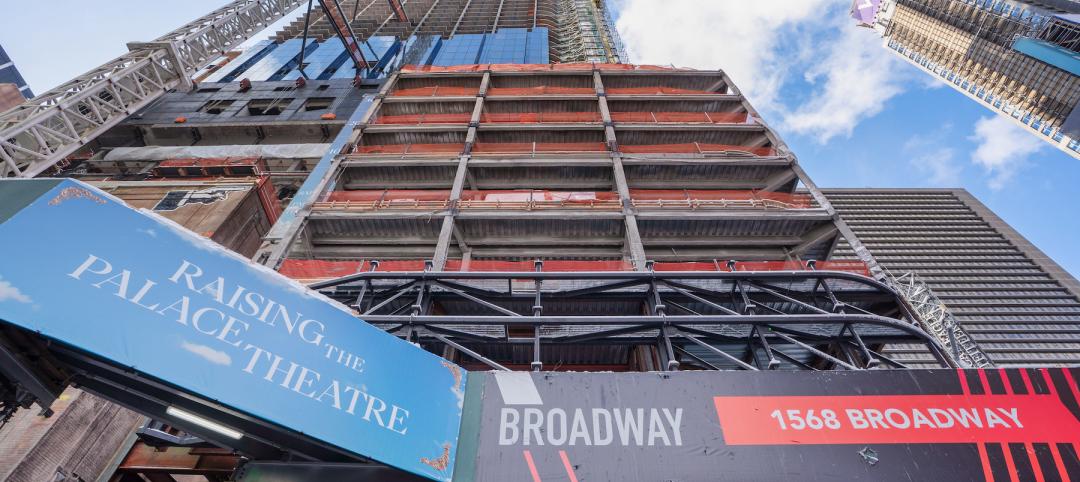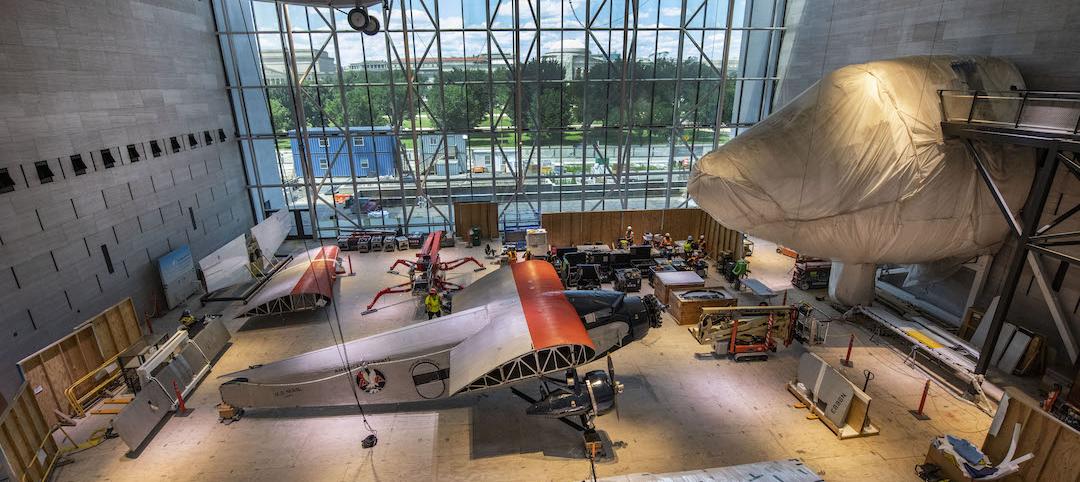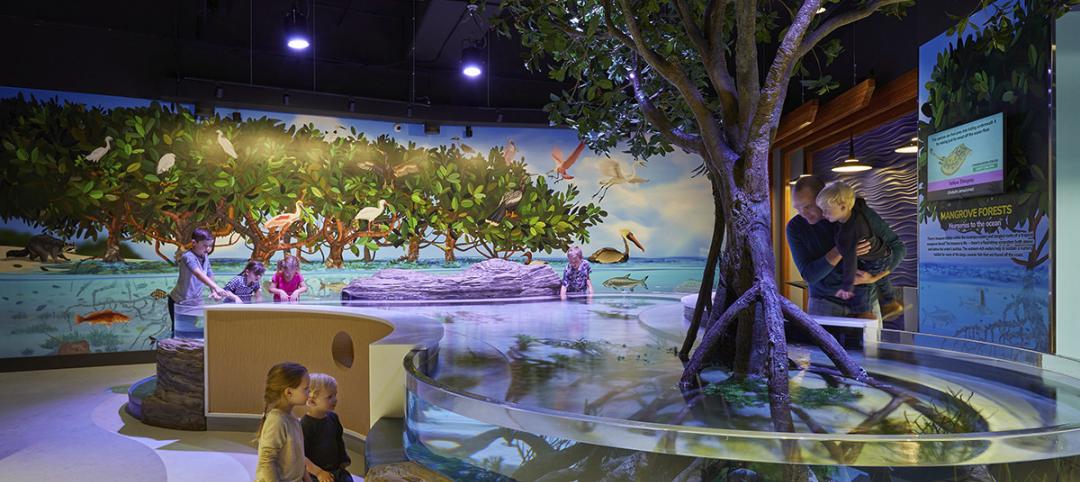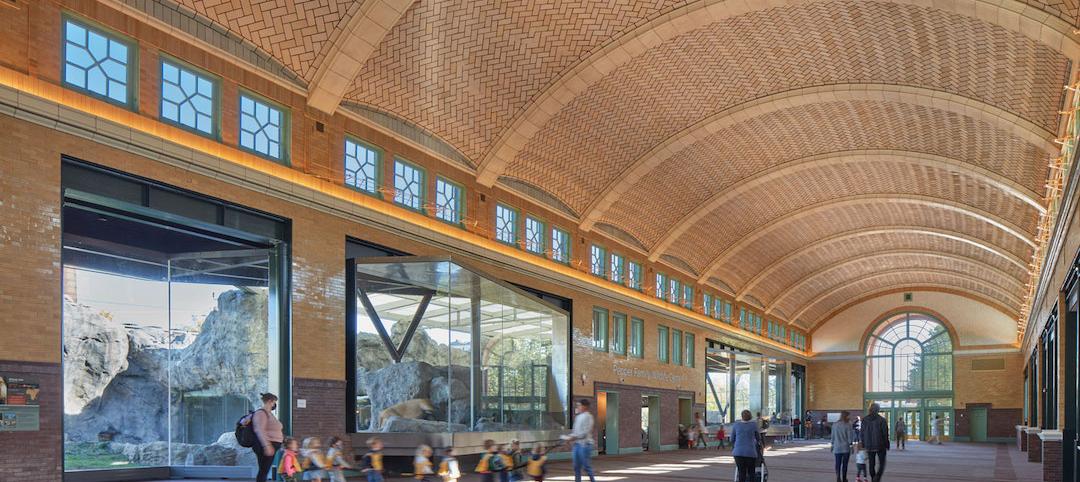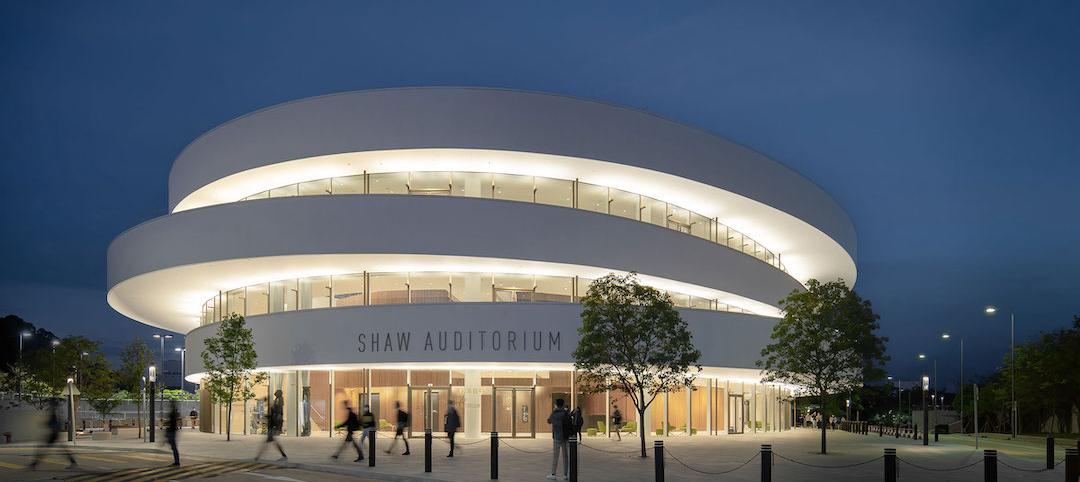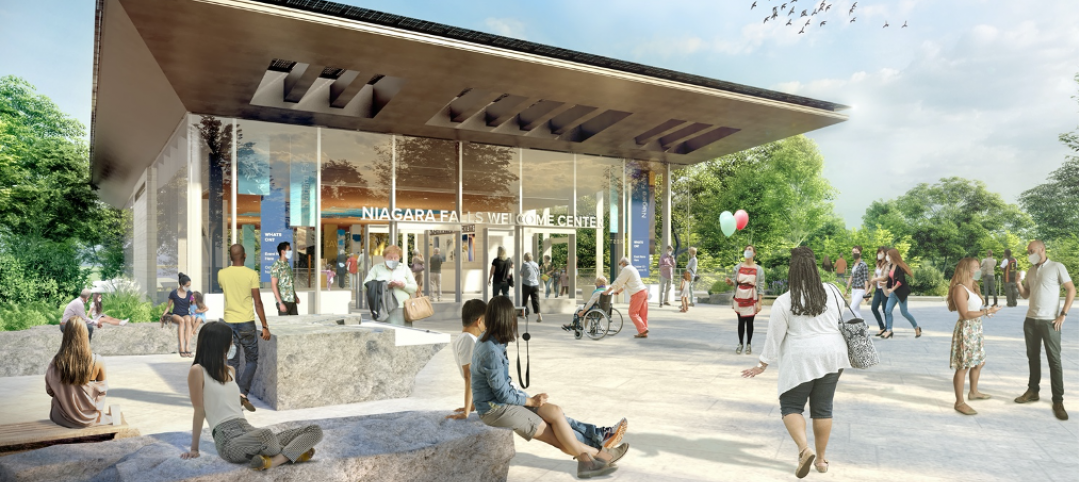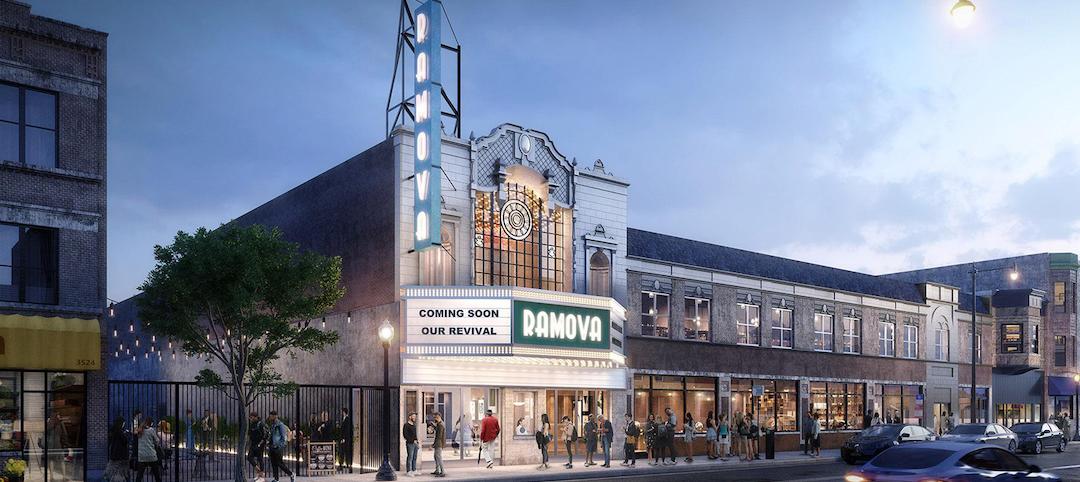The TKF Foundation is a 10-year-old private nonprofit that specializes in creating open, public sanctuaries. Since its founding, TKF has supported the creation of more than 130 Open Space Sacred Places in the Baltimore-Annapolis-Washington area alone.
“We envision a time when every urban community in the U.S. will provide people with opportunities for intimate, intentional daily doses of nearby urban nature through the creation of a system of nature spaces,” says the Foundation’s mission statement.
On May 20, The Naval Cemetery Landscape, a 1.7-acre public space on the site of a former Naval Cemetery on the waterfront in Brooklyn, N.Y., opened. This is the sixth nationally funded site where TKF and its research partners are studying the relationship of nature and human resiliency, and specifically the impact that proximity to nature has on a person’s ability to recover from psychological, social, or physiological stresses.
A team led by Denise Milstein, Director of Columbia University’s Master’s degree program in Sociology, is conducting the study at the cemetery site, which focuses on students of the Brooklyn Green School and on residents of Brooklyn Housing and Community Services.
“It is an excellent example of how green space can foster social cohesion, and the research being done here should offer insights for other city planners on the value such spaces bring to cities and their residents,” said Tom Stoner, TKF’s 81-year-old co-founder.
The Foundation selected the Naval Cemetery Landscape project from 126 that responded to its RFP for a grant. TKF visited more than 30 sites over an 18-month period before making its choice, says Jayne Trentanove, a Foundation spokesperson.
The project is the first open space of the Brooklyn Waterfront Greenway, which when completed will comprise a 27-mile route for pedestrians and cyclists that connects neighborhood parks and open spaces from the Greenpoint section of Brooklyn to Jamaica Bay, Queens.
The Naval Cemetery Landscape’s development was spearheaded by the nonprofit Brooklyn Greenway Initiative in partnership with the Brooklyn Navy Yard Development Corporation.
“As we approach Memorial Day, we are reminded of the significant military history of the Yard, and through the thoughtful landscape design, we hope to honor those roots,” said David Ehrenberg, President and CEO of the Brooklyn Navy Yard.
Marvel Architects and Nelson Byrd Woltz Landscape Architects designed the site in a way that respects its history as a burial ground. New York’s Department of State collaborated on this project, in that since 2004 it has awarded five Environmental Protection grants totaling $3,318,000 to the Brooklyn Greenway Initiative and the Brooklyn Borough President’s office.
The former Brooklyn Naval Hospital Cemetery site is located in the southeast corner of the Brooklyn Navy Yard. The cemetery had been active from 1834 through 1910, and was a burial site for more than 2,000 people. In 1926, the Navy sought to move all remains and inter them at nearby Cypress Hills National Cemetery.
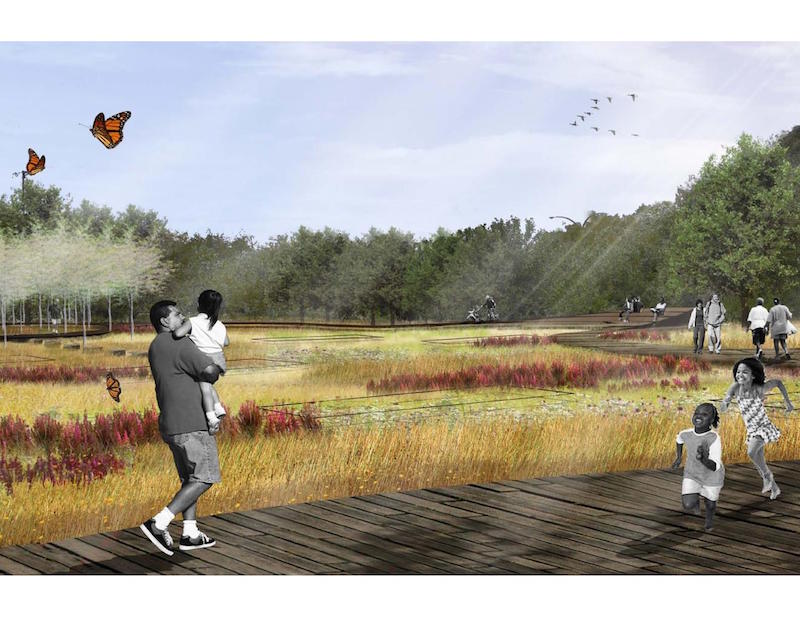
The 1.7-acre Naval Cemetery Landscape is serving as a research site studying the importance of nearby nature of human resiliency, and to evaluate how proximity to landscape affects human well-being. Image: Marvel Architects and Nelson Byrd Woltz Landscape Architects.
Establishing a legacy
TKF Foundation will be closing its doors in December 2017, says Trentanove. But it has laid the groundwork for future urban landscape and restorative places through the research it has conducted over the years, the open spaces it has helped create, and through its national grant program that has provided $4.5 million for six research projects.
Aside from the naval cemetery site, its other grant projects include:
•The Green Road, a woodlands path that runs through the campus of Walter Reed National Military Medical Center in Bethesda, Md. It provides “an oasis of respite” for wounded soldiers and their families, as well as a patient-centered approach to healing;
•A Nature Place in Portland, Ore., where the roof of Legacy Emanuel Medical Center was converted into a 6,500-sf healing and restorative garden that’s open to the public, but whose main purpose is to provide a calming area for the facility’s Cardiovascular ICU and its Family Birthing Center. The effect of that space on patients and their families, on nurses, and on post-partum mothers is being studied;
•TKF has two “Landscapes of Resilience” research sites where the organization and its partners are analyzing how the natural environment can influence and help restore places in crisis. One site—Butterfly Garden & Overlook—is located in Joplin, Mo., on land where homes were wiped out by an E-5 tornado five years ago. A second, under development, is recreating a community garden and large gathering place on the edge of Jamaica Bay in Queens, N.Y. It is located adjacent to two senior citizen housing towers that were severely damaged by Hurricane Sandy;
•TKF is also funding research on why nature improves health outcomes. A team of researchers, led by Marc Berman of the University of Chicago, is evaluating the effects of nature on cognitive functioning. One of the team’s goals is to create a kind of guide that would inform urban planners about what elements they should include in future projects that are most likely to attract people.
A second study, conducted by a team from the University of Illinois at two of TKF’s older sites in Baltimore, is looking at different populations and how spending time in natural settings affects one’s immune system.
Related Stories
University Buildings | Feb 18, 2022
On-campus performing arts centers and museums can be talent magnets for universities
Cultural facilities are changing the way prospective students and parents view higher education campuses.
Resiliency | Feb 15, 2022
Design strategies for resilient buildings
LEO A DALY's National Director of Engineering Kim Cowman takes a building-level look at resilient design.
Cultural Facilities | Jan 27, 2022
Growth in content providers creates new demand for soundstage facilities
Relativity Architects' Partner Tima Bell discusses how the explosion in content providers has outpaced the availability of TV and film production soundstages in North America and Europe.
Cultural Facilities | Jan 18, 2022
A building in Times Square aspires to be a marketing and arts tool
The 580-ft TSX Broadway will have several LED signs on its exterior, and host an existing 27,000-sf theater that was hoisted 30 ft above street level.
Cultural Facilities | Dec 16, 2021
Museums and other cultural spaces reconsider how to serve their communities
Efforts to raise capital for cultural buildings became necessary during the COVID-19 health crisis.
Giants 400 | Nov 19, 2021
2021 Cultural Facilities Giants: Top architecture, engineering, and construction firms in the U.S. cultural facilities sector
Gensler, AECOM, Buro Happold, and Arup top BD+C's rankings of the nation's largest cultural facilities sector architecture, engineering, and construction firms, as reported in the 2021 Giants 400 Report.
Cultural Facilities | Nov 19, 2021
Goettsch Partners completes Lincoln Park Zoo’s Pepper Family Wildlife Center
The project doubles the size of the previous lion habitat.
Cultural Facilities | Nov 17, 2021
Henning Larsen-designed Shaw Auditorium opens at the Hong Kong University of Science and Technology
The project celebrated its grand opening as part of HKUST’s thirtieth anniversary celebration.
Cultural Facilities | Oct 19, 2021
Niagara Falls is getting a bigger Welcome Center
The GWWO Architects-designed building will mostly sit on the site of the center it replaces.
Reconstruction & Renovation | Oct 13, 2021
Restoration of Ramova Theater in Chicago’s Bridgeport Neighborhood begins
The building was originally built in 1929.






